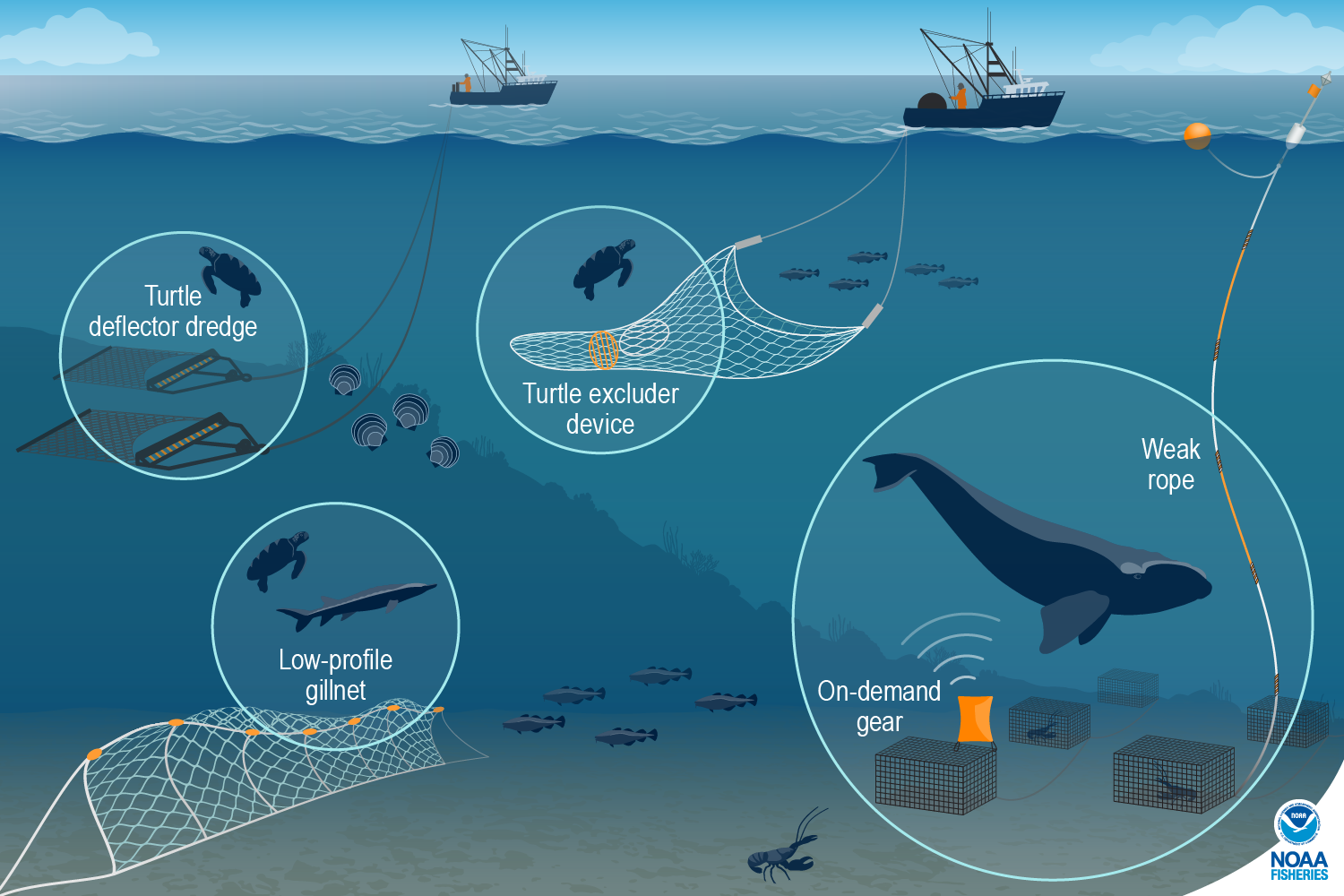Protected Species Gear Research
We work closely with the commercial fishing industry to reduce the risk of harmful interactions with marine mammals, turtles, and other protected species listed under the Endangered Species Act and the Marine Mammal Protection Act.
Testing gear with fishermen under actual fishing conditions is key to developing modifications that can reduce whale entanglements without significant loss of the targeted catch.
On-Demand Gear to Reduce Large Whale Entanglement
Large whales, including humpbacks and the endangered North Atlantic right whale, can become entangled in lobster and gillnet gear. NOAA Fisheries has required many changes to the gear to reduce entanglements and the injuries and deaths that may result. While these regulations have reduced this risk, some remains.
NOAA Fisheries continues to work with the fishing industry and others to find solutions that will eliminate this risk. We have built relationships with fishermen, on-demand system manufacturers, and environmental organizations. We are working to further develop safe and feasible fishing methods that do not use static vertical lines in pot/trap and other fishing gears.
Learn more about our on-demand gear work
Gear Library
To increase systems testing, we have assisted in creating a “gear library.” With the help and donations from environmental and academic organizations, we house hundreds of on-demand systems from many different manufacturers. Currently oriented toward on-demand fishing systems, we anticipate expanding the library to other experimental gear systems engineered to reduce bycatch of protected species.
Permitted fishermen and researchers can borrow from the library to test gear in real fishing situations. In return, the borrowers provide us with insights into how the gear operates on their vessel, any problems encountered, and suggestions for improving the technologies.
Reducing Sea Turtle Entanglement and Capture in Fishing Gear
All sea turtles in U.S. waters are listed under the Endangered Species Act and some fisheries are a significant threat to them. Our research helps find ways to modify gear so that it continues to fish well, but is less likely to catch or entangle sea turtles.
Learn more about our work to reduce sea turtle bycatch


